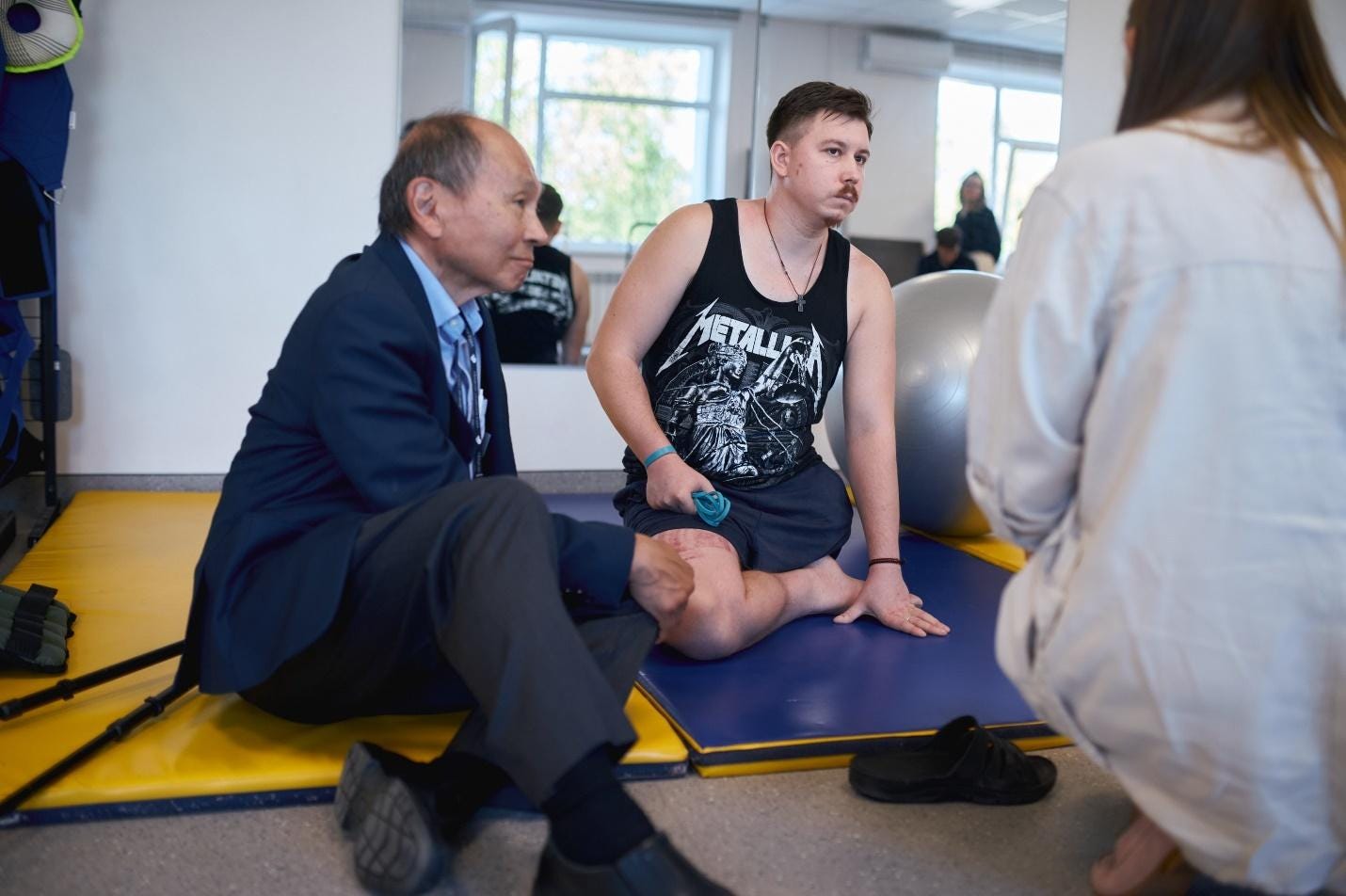 |
I just returned from Ukraine and the annual meeting of the Yalta European Security (YES) conference, one of the premier international events for people interested in the situation in that country. (See my Frankly Fukuyama video on the trip here.) Getting in and out of Kyiv is quite a challenge, especially from California; it requires flying to Frankfurt, then to Warsaw, then taking a 3-hour bus ride to the Ukrainian border, then an 8-hour overnight train to Kyiv. Despite this, the foreign representation at the meeting was very impressive and even larger than last year. I was able to host a nice lunch with over 20 alumni of our various Stanford leadership programs while there, many of whom have moved on to positions of considerable authority.
Kyiv looks surprisingly normal from the outside, with people going about their daily lives despite periodic air raid alerts. But the military situation is deteriorating. Despite the morale boost provided by the Ukrainian incursion into Kursk oblast, the Russians continue to press forward to Pokrovsk, a key logistical hub underpinning Ukrainian defenses in western Donbas. The Russians may lose ten soldiers for every Ukrainian killed, but Ukraine’s manpower situation is much more dire. Many of their most experienced soldiers—the ones who haven’t been killed—have been fighting without a break since the beginning of the full-scale invasion in February 2022. Some have served even longer; we heard from a veteran who had volunteered back in 2015. He said that the Russians had deprived him of ten years of his life, making it impossible for him to marry or to have a family or lead anything like a normal life. We visited a Pinchuk-funded Recovery Center, one of many around the country, where severely wounded soldiers are taken for physical therapy. One who had lost both legs told us how his vehicle was attacked by a Russian FPV drone and how he had to hide in the bushes all night with a self-applied tourniquet around his shattered leg before being rescued.
The nature of the war has evolved rapidly since its early days; it is now being fought on both sides with drones. On the front lines, one can move only during twilight or dawn, since the drones can see and destroy everything in daylight or nighttime. Riding in an armored vehicle makes one particularly vulnerable. One commander of a drone unit explained that the technology was changing extremely rapidly; he expected AI would permit pilotless drones by next year that could choose targets and coordinate among themselves without human intervention. The immediate impetus for this shift is the extreme vulnerability of drone operators to counter-battery fire. Ukraine has created a very impressive indigenous drone industry that is capable of producing hundreds of thousands of drones per year; the problem is not capacity but money. A very simple way of helping Ukraine is for the West to provide several billion dollars to support production—perhaps out of Russia’s frozen assets?
The Russians continue to strike targets throughout Ukraine with missiles and Iranian Shahed drones, aiming in particular for the country’s electrical grid. The Shaheds, which are relatively easy to shoot down, cause the Ukrainians to light up their anti-aircraft radars, whereupon the latter are attacked by Kinzhal ballistic missiles. One family described their living situation on the 20th floor of a Kyiv apartment building, whose elevators were knocked out in missile strikes, thus forcing them to carry their young children up the stairs every day. The bombardment is expected to increase as the weather turns colder this winter.
There is therefore a lot of bitterness about the restrictions that have been placed on the use of long-range missiles like ATACMs by President Biden, Olaf Scholz, and other Western leaders. While many incoming rockets are taken out by air defenses, the defenses are both expensive and inadequate, and many rockets get through. The Ukrainians feel that the Russians have been given sanctuary in their own country, and that the only way to force them to stop is by making their territory vulnerable to Ukrainian reprisals. They have openly criticized President Biden’s fear of escalation, pointing to the many “red lines” that have been crossed already with no Russian escalatory response. The logic of this is impeccable, and it was very disappointing that, at the summit between Biden and British PM Keir Starmer towards the end of the conference, no lifting of range restrictions was announced.
During their debate on Sept. 10, Trump refused to say that he hoped for a Ukrainian victory over Russia, and continued to assert that he could end the war. While we were in Kyiv, vice presidential candidate JD Vance outlined the Trump “peace plan” for Ukraine. This plan was drawn directly from the Putin playbook: It would feature a ceasefire freezing current lines in place, effectively ceding to Russia control over territories captured since the start of the full-scale invasion and securing a Ukrainian promise not to join NATO. I can see why the Ukrainians themselves may want to downplay their fears of a future Trump administration, since they are the ones who would have to live with it if he is elected. But there should be no mistaking the disastrous consequences for Ukraine of a Republican victory in November.
I’m grateful to Viktor Pinchuk for organizing the YES conference, now in its 20th iteration. The hope was expressed that the conference may one day return to its original venue in Yalta. For this to happen, though, the United States and Ukraine’s other partners must get much more serious about the level of military and economic support they are willing to provide Kyiv, and stop deterring themselves in the face of Russian aggression.
Francis Fukuyama is Senior Fellow at the Freeman Spogli Institute for International Studies at Stanford University. He writes the “Frankly Fukuyama” column, carried forward from American Purpose, at Persuasion.

No comments:
Post a Comment